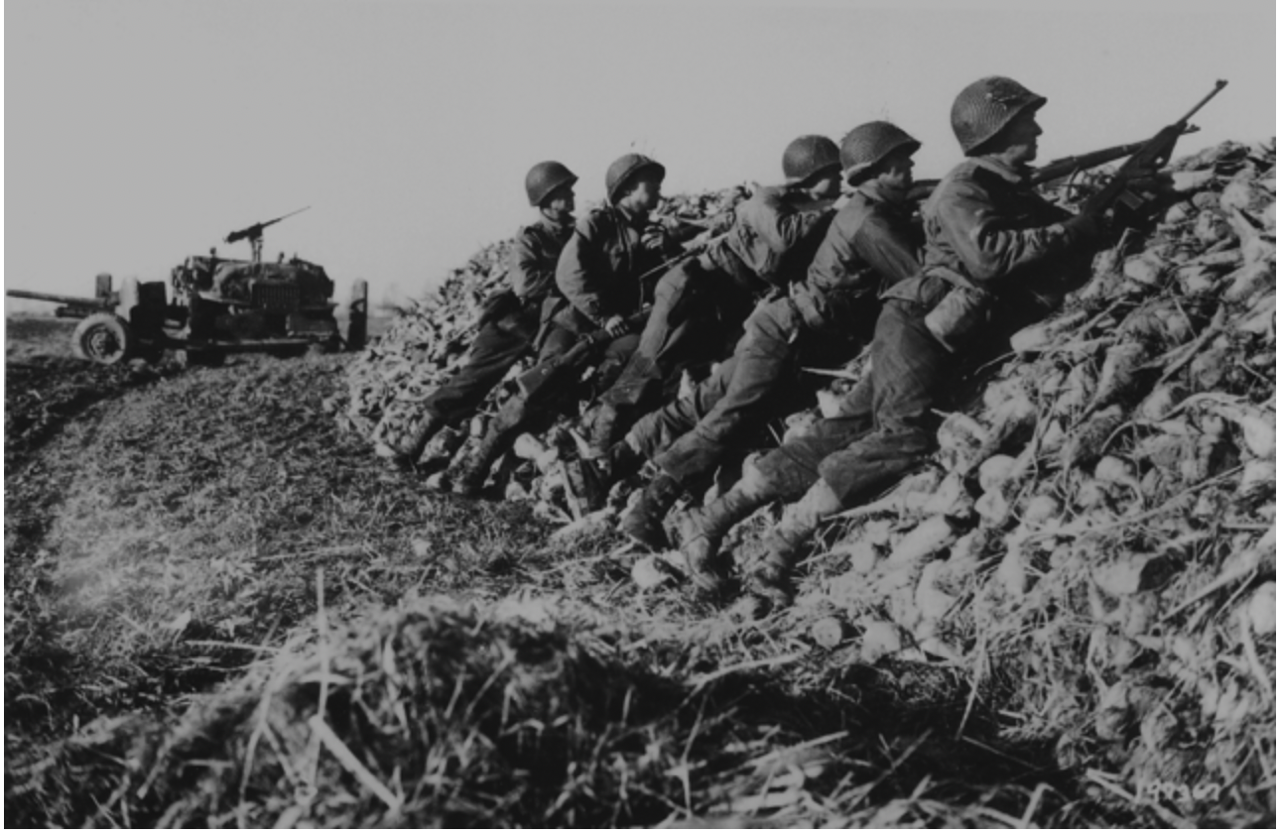Vector: The liberation of Achtmaal and the "Achtmaal package"
The liberation of West Brabant began on October 20, 1944, from the Belgian border region with Operation Pheasant. General Crerar's First Canadian Army commanded a British, Polish and American Division for this operation, in addition to its own divisions.
The American 104th Infantry Division nicknamed Timberwolves, commanded by Major General Terry Allen, came directly from America and had no combat experience. Due to lack of transportation resources, the Americans did not arrive at the front near Wuustwezel until late October. On October 25, the Americans went on the attack via the Wuustwezel - Breda road with Zundert as their objective. After heavy fighting in the border area, the Americans managed to break through the German defenses and take Zundert two days later. After regrouping, the division was ordered on Oct. 28 to continue the advance and cut off the main road between Breda and Roosendaal.
The village of Achtmaal was liberated by the 3rd Battalion 415th Infantry Regiment of the 104th U.S. Infantry Division. This unit operated on the division's left flank and attacked over flat, open and swampy terrain. The German troops had established several strong positions. Mines and snipers covered the eventual German retreat.
On Friday a…
The American 104th Infantry Division nicknamed Timberwolves, commanded by Major General Terry Allen, came directly from America and had no combat experience. Due to lack of transportation resources, the Americans did not arrive at the front near Wuustwezel until late October. On October 25, the Americans went on the attack via the Wuustwezel - Breda road with Zundert as their objective. After heavy fighting in the border area, the Americans managed to break through the German defenses and take Zundert two days later. After regrouping, the division was ordered on Oct. 28 to continue the advance and cut off the main road between Breda and Roosendaal.
The village of Achtmaal was liberated by the 3rd Battalion 415th Infantry Regiment of the 104th U.S. Infantry Division. This unit operated on the division's left flank and attacked over flat, open and swampy terrain. The German troops had established several strong positions. Mines and snipers covered the eventual German retreat.
On Friday afternoon, October 27, the vanguard of the said American unit penetrated to the center in Achtmaal. The village seemed deserted. From a residence a uniformed person approached them; it was Chief of Police Lambertus van der Meer. After identifying himself as a police officer, he asked for an officer of high rank. Lieutenant Colonel Kelleher introduced himself as a commander of the Americans, and Van der Meer asked for ID and also showed his ID as a member of the underground. Kelleher accompanied Van der Meer to his official residence. In the living room, Van der Meer moved the stove and retrieved from under a concrete slab a bundle of papers, which he handed Kelleher. This “package from Achtmaal” turned out to be valuable intelligence gathered by the underground about German defenses in the Netherlands. The underground had deposited the package with him for him to hand over to the first Allied officer he encountered. This package was immediately transferred to the division who transferred it to the intelligence section of the Canadian headquarters near Antwerp. In Achtmaal there is a listening post in front of the Military Historical Museum where this story can be heard. The museum does not only pay much attention to the liberation of Achtmaal, but also the role of the Timberwolves in West Brabant is explained.

